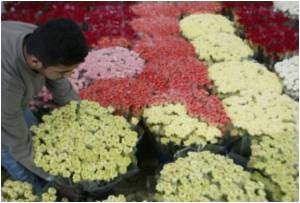
Lead author Amy Zanne, assistant professor of biology in the George Washington University's Columbian College of Arts and Sciences, said freezing is like a plant's equivalent to frostbite, asserting that their water-conducting pipes can be blocked by air bubbles as water freezes and thaws, and over time, if plants moved into colder climates, they've had to figure out how to get around these problems.
Dr. Zanne and a team of researchers identified three repeated evolutionary shifts they believe flowering plants made to fight the cold. Plants either:
dropped their leaves seasonally, shutting down the pathways that would normally carry water between roots and leaves;
made skinnier water-conducting pathways, allowing them to keep their leaves while reducing the risk of air bubbles developing during freezing and thawing, which would shut down those pathways (the fatter the pathways, the higher the risk); or
avoided the cold seasons altogether as herbs, losing aboveground stems and leaves and retreating as seeds or storage organs underground, such as tulips or tomatoes.
Advertisement
Source-ANI











